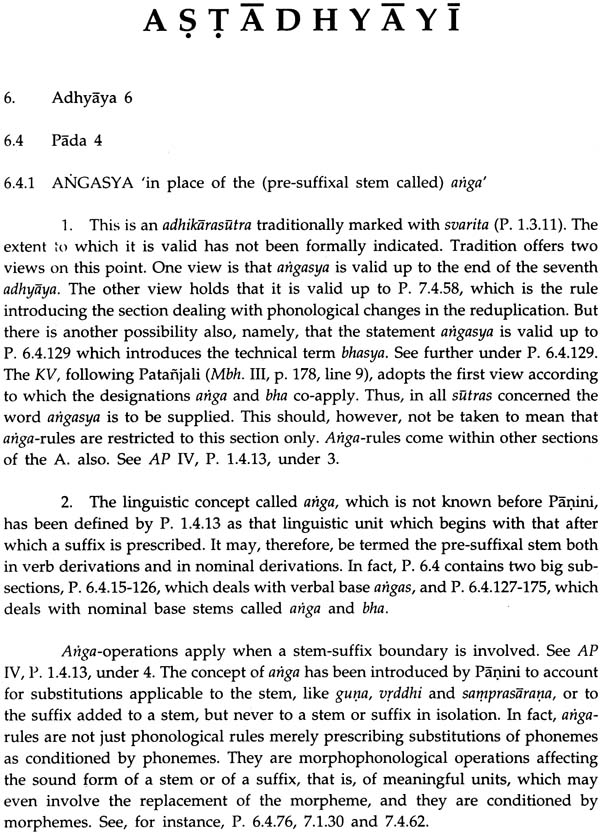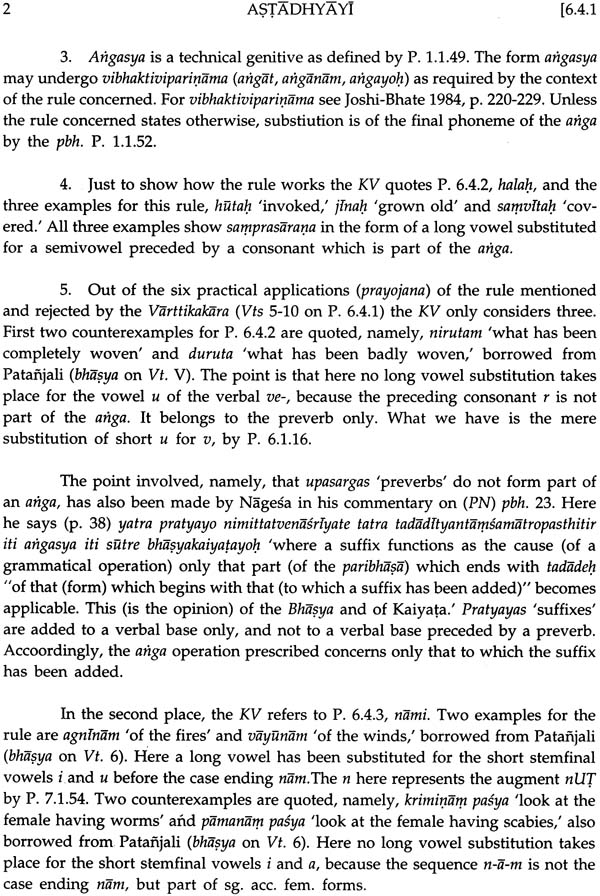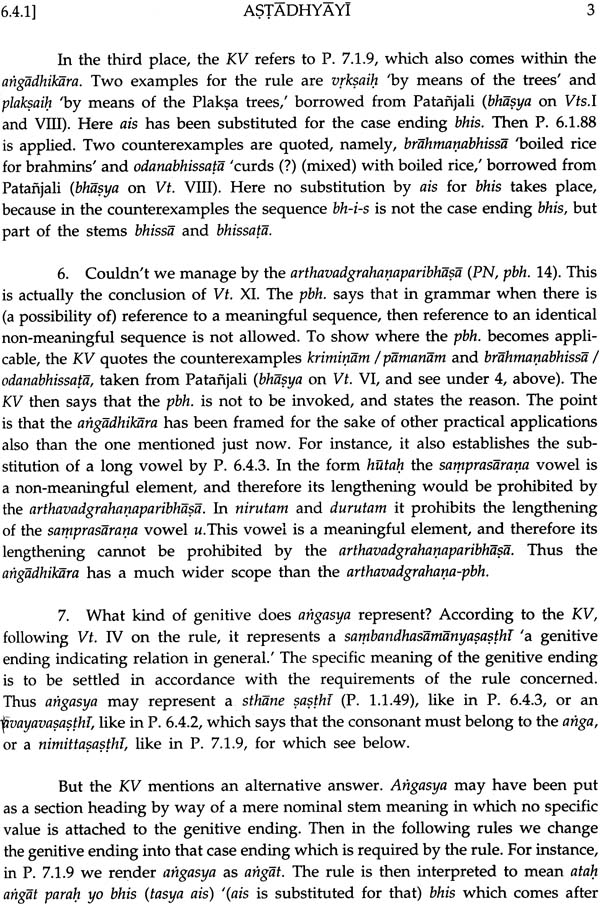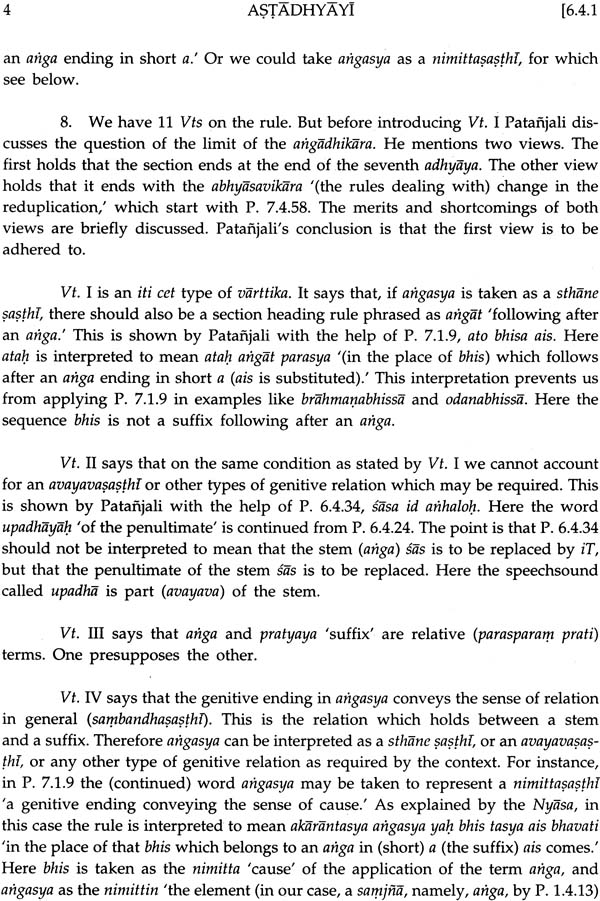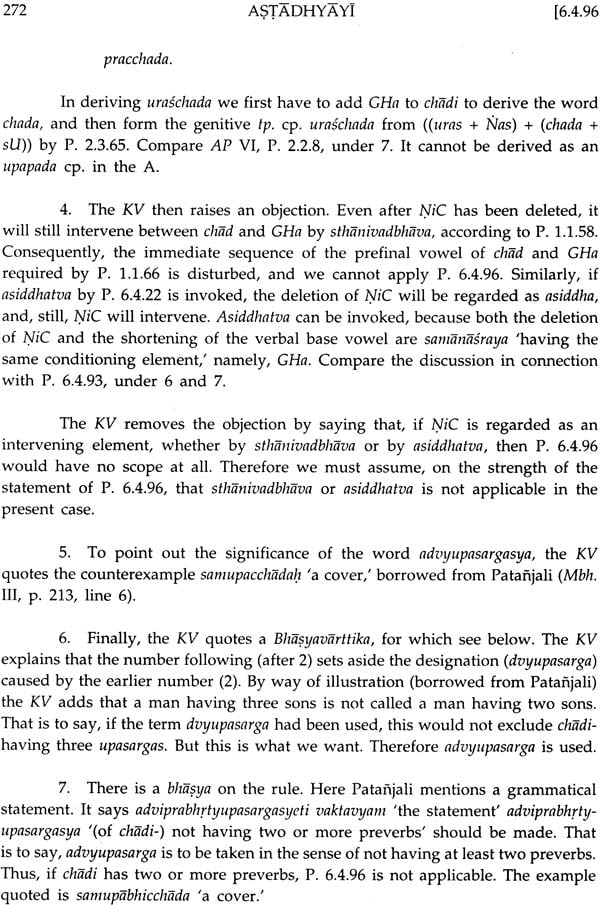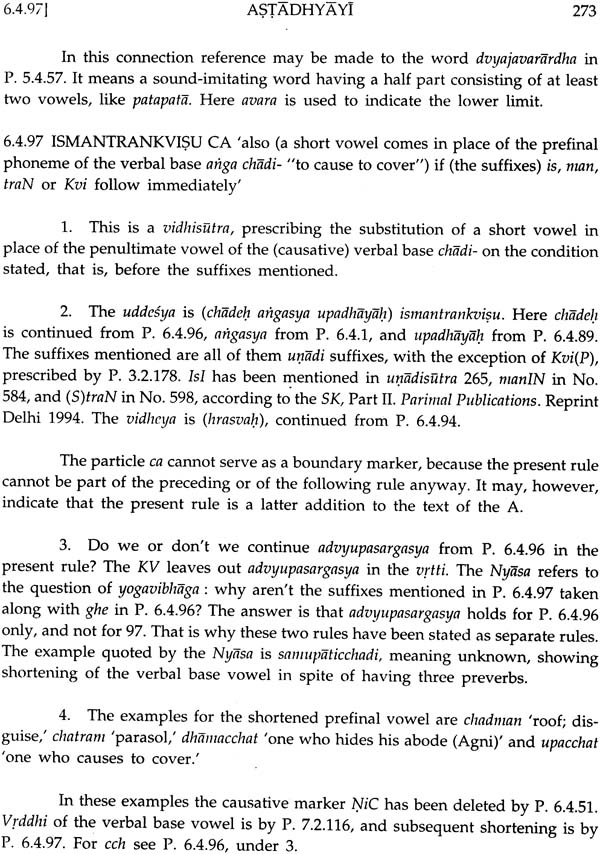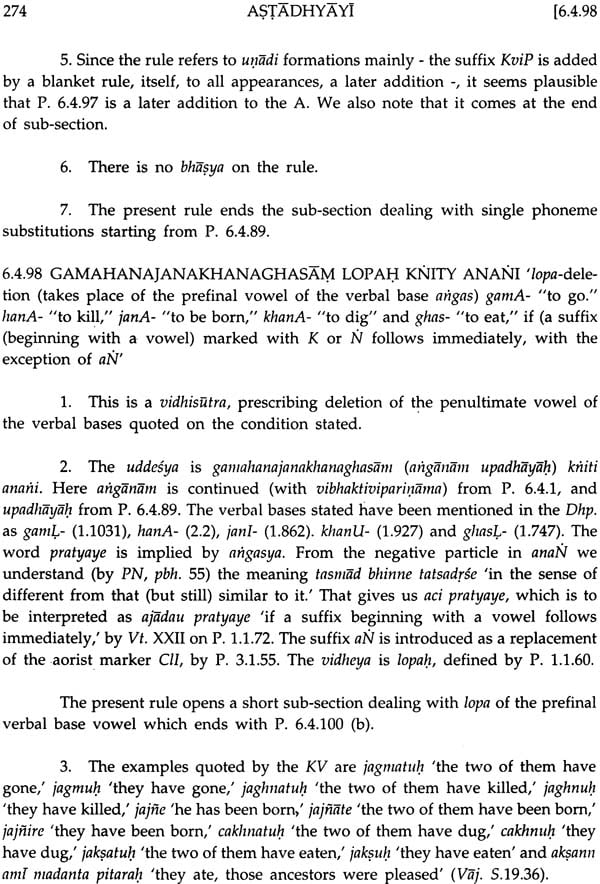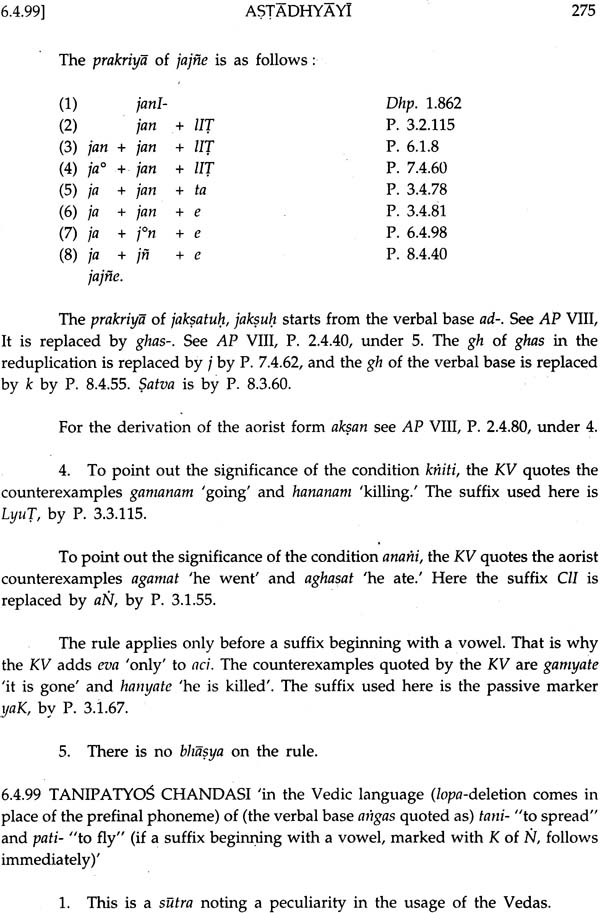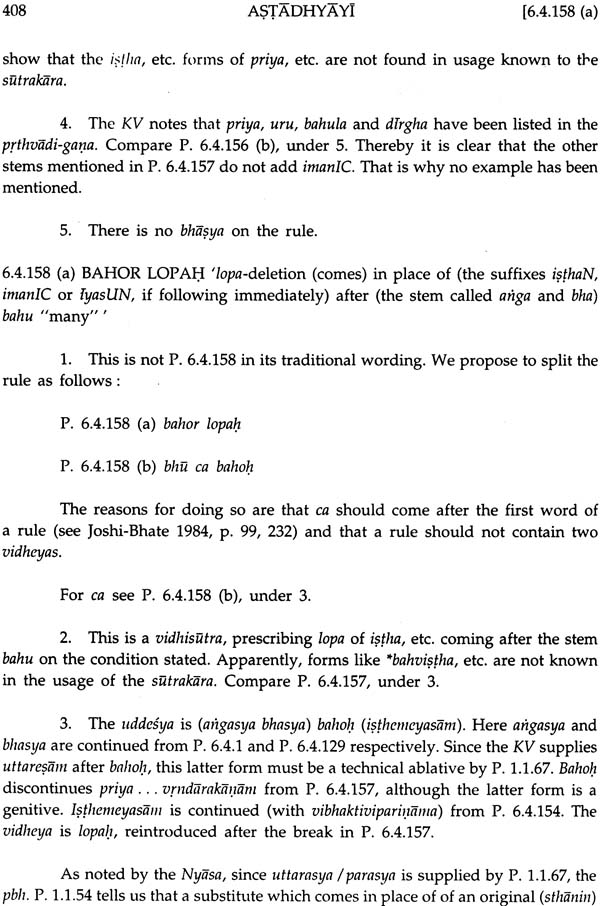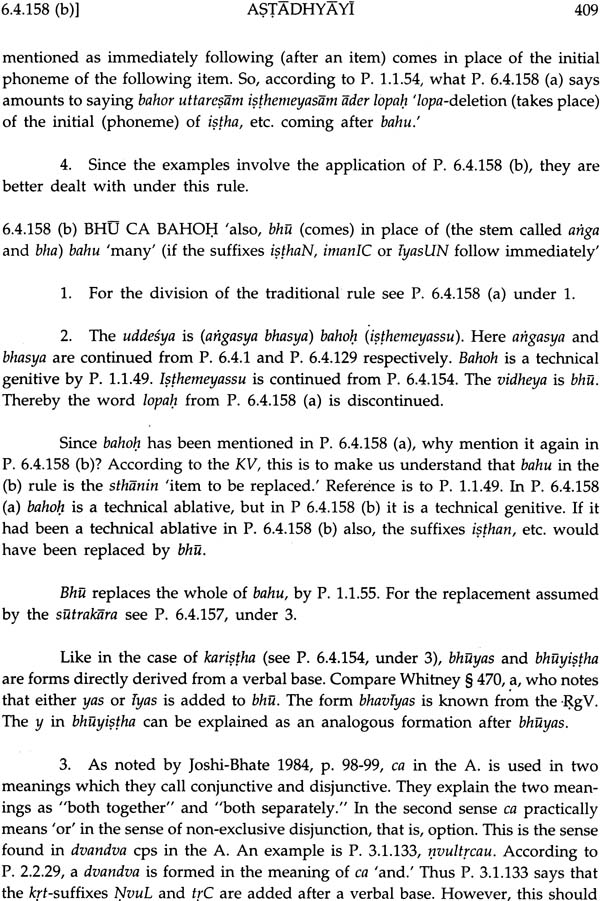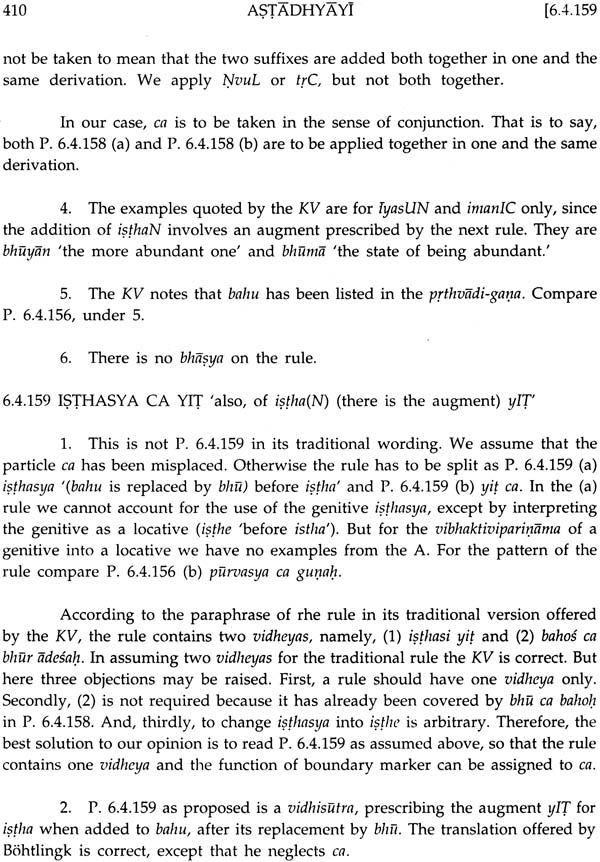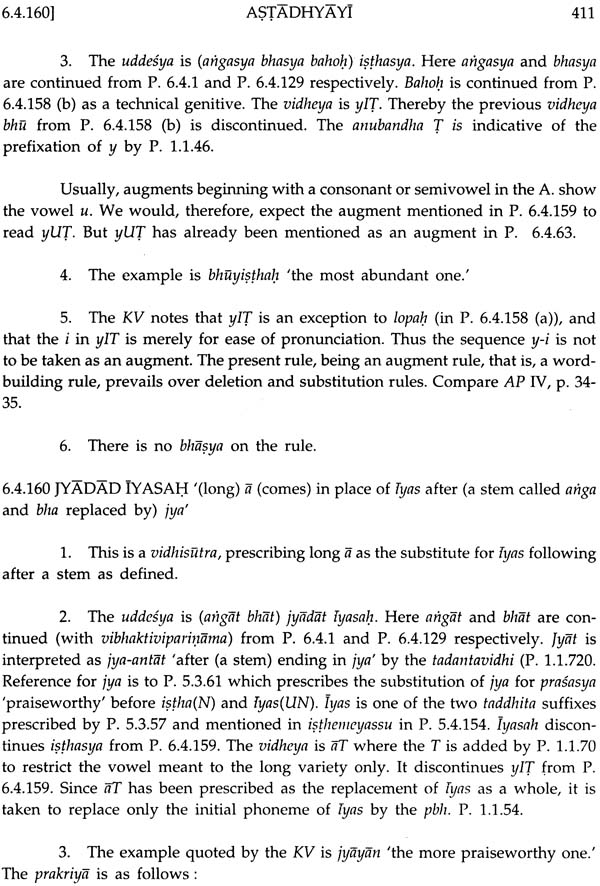
The Astadhyayi of Panini: Volume IX (6.4.1 - 6.4.175)
Book Specification
| Item Code: | IDE659 |
| Author: | Translation & Explanatory Notes By. S.D. Joshi & J.A.F. Roodbergen |
| Publisher: | SAHITYA AKADEMI, DELHI |
| Language: | English |
| Edition: | 2002 |
| ISBN: | 8126013486 |
| Pages: | 520 |
| Cover: | Hardcover |
| Other Details | 10.0" X 7.7" |
| Weight | 1.13 kg |
Book Description
From the Introduction:
P. 6.4: Survey of the Topics
A. The main topics
1. The overall topic of the pada is anga, which continues up to the end of the seventh adhyaya. The Paninian analysis of what is called bhasa is basically a stem-suffix analysis. As a method, it marks the beginning of linguistics as a science on the subcontinent India, and later, after its discovery by Western scholars in the early nineteenth century, the beginning of linguistics as a science in Western Europe, Anga, defined by P. 1.4.13, stands for the stem after which derivational and inflectional suffixes are added. The stem is that portion of a word which guarantees lexical identity throughout a paradigm. The addition of suffixes modifies both the form of the stem and suffixes and their meaning, depending on the nature of the suffix. It also affects the form of the suffix. Compare AP IV, p. 58-59, and AP VIII, p. 95. An important sub-section within the anga-section is formed by rules conditioned by the addition of ardhadhatuka suffixes.
2. The second main topic of the pada is bha. The corresponding section starts from P. 6.4.129, and it continues up to the end of the pada. Bha, defined by P. 1.4.18-19, stands for a stem which is followed by particular suffixes. According to P. 1.4.20, the designation bha also applies to particular Vedic stems collected together in a gana. We have followed the traditional assumption that the designations anga and bha co-apply in the section introduced by P. 6.4.129.
3. The third main topic of the pada is asiddhavattva 'the status of being asiddhavat.' The asiddhavat section starts with P. 6.4.22, and it fades away at the end of the pada. . It is not concerned with the analysis of language, but with the application of rules. Asiddha or asiddhavat 'not having taken effect' is the term used in the A. to suspend the operational effect of rule with regard to the application of another rule, and thus to give scope for application to the other rule, or to block it. In the asiddhavat section rules which have such an effect with regard to the application of other rules in this section have been collected together.
B. The organization of P. 6.4
Within the sections devoted to the main topics of anga and bha rules are grouped together in sub-sections dealing with minor topics. We mention the following:
I. Anga P. 6.4.1-P. 7.4.97
(1) P. 6.4.2-18 deal with the substitution of a long vowel for vowels in final and prefinal position of a stem. Here the majority of stems is formed by nominal stems.
(2) P. 6.4.23-33 deal with lopa of n, mainly in prefinal position of a verbal base. Two nipatana rules are included.
(3) P. 6.4.34-36 deal with substitutions involving a verbal base vowel or the whole of a verbal base.
(4) P. 6.4.37-40 deal with lopa of m or n in final position of a verbal base.
(5) P. 6.4.41-45 (b) deal with the substitution of long a for the nasal in final position of verbal bases.
(6) P. 6.4.46-69 deal with phoneme substitutions conditioned by a following ardhadhatuka suffix.
(7) P. 6.4.71-75 deal with the augments aT and aT.
(8) P. 6.4.77-80 deal with iyAN-uvAN substitutions.
(9) P. 6.4.81-87 deal with yAN-substitutions.
(10) P. 6.4.89-97 deal with vowel substitutions.
(11) P. 6.4.98-100 (b) deal with lopa, mainly in Vedic usage.
(12) P. 6.4.101-103 deal with the substitution of dhi for hi.
(13) P. 6.4.104-106 deal with luk-deletion of suffixes added in the derivation of particular finite verb forms.
(14) P. 6.4.107-112 mainly deal with lopa of vowels belonging to a conjugation class marker. Three rules here specifically deal with the verbal base kr- 'to do.'
(15) P. 6.4.113-118 deal with vowel substitutions, including lopa, in final position of a verbal base anga.
